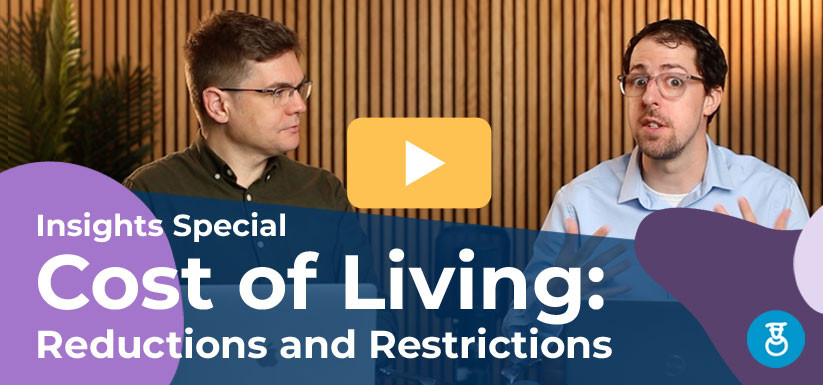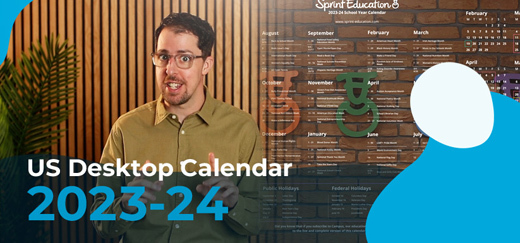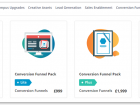The 'EdTech Wishlist' of 1,039 Teachers (New Survey)
The 'EdTech Wishlist' of 1,039 Teachers (New Survey)
The EdTech and software insights you need to really tick teachers’ boxes.
The EdTech and software insights you need to really tick teachers’ boxes.
Our recent, in-depth Edtech research project into educators’ challenges, opinions, and priorities revealed some surprising results.
Results that any savvy EdTech or software provider should certainly read up on before they begin planning their next marketing campaign.
We asked 1,039 UK teachers the following question:
What improvements do you want EdTech/learning platform providers to make to keep/win you as a customer?
In the style of the official UK top 40, we’re going to countdown the top 10 most common responses, grouped from the open-ended answers we received.
In at No. 10: Align better with the curriculum
Even if you’re providing the most incredible, engaging resources the world has ever seen, if they’re not curriculum-aligned, it will be difficult for schools to justify the expense.
If you can help schools to quickly understand how your resources align with their long-term goal of improving the educational outcomes of pupils and help them evidence this, they’ll instantly see the value you’re providing.
Sprint recommends: Give schools more detail about how your content aligns with the curriculum and assure them that your content is dynamic and ever-evolving to meet their needs and help them see that buying into your business is a sustainable investment.
In at No. 9: Improve reliability
Teachers need technology that they can trust for lessons to run smoothly. Of course, things will always go wrong occasionally. It’s how your business deals with that which counts.
Sprint recommends: Ensure that users can quickly and easily get access guides that will help them troubleshoot the problem themselves – but crucially offer the option for your customer to actually speak to someone who can help.
Under pressure, customers will often be unable to carefully and rationally work their way through written guides to establish and fix a problem. It’s human nature to want a real person to help resolve a problem quickly. If you can offer that personal service – shout about it.
In at No. 8 & 7: Improve resources + features
Quite simply, teachers can never have too many resources!
Survey responses included a variety of recommended focus areas to improve resources:
- More resources for non-core subjects – subjects including music and dance were mentioned.
- Extension tasks – to save teachers preparing additional resources to support advanced pupils.
- More engaging resources – teachers asked for ‘not just quizzes’, more engaging videos, and a variety of ways to assess knowledge.
Sprint recommends: If resources are an integral part of your offer, don’t forget to give some of your best away as free demo resources. It’s tempting to hold your best resources back – why would you give them away?
However, you want to prove that resources are the best – and first impressions count. So, blow them away with some high-value, free content to reel them in!
In at No. 6: Better integration
Another drain on teacher time is moving between multiple platforms and programmes which aren’t integrated.
Teachers have told us that they need EdTech and learning platforms that:
- Link to SIMS (School Information Management Systems) – to ensure the smooth running of a school.
- Offer quick login. Another common frustration among our responses was time-consuming login processes.
Sprint recommends: This is all about communication - make sure that this kind of information is easily accessible for potential customers, so they don’t have to spend time searching every corner of your website of literature.
In at No. 5: Make it free!
We can’t blame them for trying!
Sprint recommends: Schools will pay for the resources and technology they need though.
It all boils down to value. If you can prove the value of your offer – use testimonials, case studies, offer potential customers the ability to speak directly to other schools who are successfully using your technology, and help teachers build a business case for using your solution.
In at No. 4: Improve training
There’s nothing more off-putting than a hugely complicated training schedule before you can get started with technology that should streamline processes.
If your solution requires extensive training, then it’s important to make it as simple as possible for teachers to incorporate into their busy schedule.
Survey responses included a variety of recommended focus areas to improve training:
- Training tutorials for teachers, pupils, and parents – tailored to each audience.
- Efficiency tips – online, bitesize training notifications/reminders after initial training to ensure all the features are being used to their greatest extent.
Sprint recommends: If you can offer flexibility, great! Open up your calendar with an app like Calendly, so teachers can book an onboarding session straight in with you in one click.
Can you offer video tutorials for teachers to access on-demand? Can you offer a training chat box, for quick FAQs?
Perhaps you’ve always conducted whole-day, on-site training sessions for all staff? That might have worked in the past, but we know that virtual training not only saves everyone time but also increases accessibility for those who may struggle to attend a venue.
The more flexible your training options, the more likely teachers will be able to engage fully and better understand the value of your product.
In at No. 3: Reduce cost
Third on the list was ‘reduce the cost’. Squeezing the most out of their budgets is still high on teachers’ priorities. Teachers want to ensure that they’re getting the very best value for money, and they need to prove it too.
Schools plan their budgets with their school improvement plan (SIP) in mind. This is to ensure that they are planning for the future and that all resources purchased are sustainable and are in line with the long-term goal of improving the educational outcomes of pupils.
Schools are encouraged to benchmark when procuring resources. The online DfE benchmarking system is designed to help schools easily see how much neighbouring schools spend on resources, and connect with other schools to purchase resources or services together.
The benchmarking process is designed to help schools quickly form a business case to put forward to Governors or the SLT for any proposed changes that they believe will improve student outcomes.
So, although teachers are asking to ‘reduce the cost’, they’re really saying, ‘provide good value’.
Sprint recommends: Highlight the value of your solution. Teachers need to build a business case for purchases, so help them do that easily! Be transparent, provide them with the tools they need to win others over to your side at their school because when it comes to EdTech solutions, it’s unlikely one staff member would make a purchasing decision. It’ll be a group decision and you’ll need to win them all over to win their business.
You can access a huge variety of data, including school financial data, via Campus to help segment and target your marketing activities more effectively. If you’re not yet a Campus user – get in touch with us to learn more.
In at No. 2: Improve accessibility
Any business providing technology being used by teachers, parents, and pupils face the challenge of ensuring that the technology is usable for all ages. When it comes to accessibility, software design is as important as hardware provision.
Accessibility also applies to ensuring that the design of technology is inclusive of all pupils’ needs. In 2019, the number of pupils with SEN increased to 1.32 million, 14.9% of the total pupil population. The pandemic presented new barriers to SEN pupils’ access to education – barriers that could be addressed by EdTech.
At the height of the pandemic, parents became more involved in their children’s learning than ever before, and schools have been keen to continue to build on this connection with parents. Therefore, the ability to share work digitally and ensure learning platforms are fully accessible off-site, while still ensuring data is secure, is essential for ensuring learning continuity between home and school.
Survey responses included a variety of recommended focus areas to improve accessibility:
- Simplify for pupils - The front-end of any software needs to be engaging and user-friendly for pupils and functional for teachers and parents.
- SEND provision – to ensure education is accessible to all.
- Translation support for EAL (English as an Additional Language) pupils – with an estimated 1.6 million EAL pupils in the UK, translation support will be essential for many schools.
Sprint recommends: Research and segment your audience – and tailor your message to highlight how you can help meet each segments’ unique needs. In some areas of the country, the need for translation support will be far greater, so highlight that feature higher in your messaging hierarchy. It’s all about giving the audience what they need.
In at No. 1: Improve functionality
The plea for functionality is directly related to teachers’ ever-increasing workloads. Many teachers are working across multiple platforms and programmes, and they need instantly usable technology. If your solution is intuitive and easy-to-use, all the better for helping teachers protect their precious free time.
Survey responses included a variety of recommended focus areas to improve functionality:
- Progress tracking and analytics – to help teachers assess knowledge gaps that they need to address, and to evidence progress quickly and easily.
- Assisted marking/feedback – another popular answer to address the, often repetitive, process of marking work and providing pupils with feedback.
- User forums – for teachers to share best practice and collaborate. Teachers are keen to learn from others and communicate directly with successful users.
- Safeguarding and security – the swift move to remote learning came with huge additional safeguarding challenges. Teachers are looking for greater functionality to minimise risks and reduce time spent on administration.
- Breakout rooms – depending on the platform a school is using, the ability to conduct small group work remotely was high on teachers’ wish lists.
- Bulk document upload and improve filing and storage capacity – to save teacher time.
Sprint recommends: Highlight the features and functionality of your solution above all else – schools are focused on how EdTech and learning platforms will streamline their processes and save them time, so they can focus on teaching rather than getting to grips with technology.
Teachers want to be heard! When planning new features or functionality, speak to your customer base first to prioritise updates according to the greatest need.
Need to get talking to teachers asap? Campus could be exactly what you’ve been waiting for.
If you’re looking to boost your edu-marketing and sales performance, generate more leads, and sell more to schools and teachers, but you’re not yet a Campus user – get in touch with us for a quick chat and a no-obligation quote.
Tags
Campus
CRM Software
Education Marketing
Marketing to Schools
Similar Articles


Our Annual Christmas Quiz is Here! Yule Love it!
Gather 'round, it's time for the Sprint Education Christmas Quiz!


VIDEO: Reductions and Restrictions - Cost of Living Special
Watch episode two of our new video series, in which we unpack how the cost of living crisis affects teaching, learning, and school spending.


Expert marketing to K-12 support and solutions
Expert marketing to K-12 solutions
Email Principals, Teachers, and District Staff Inboxes
Email teachers and staff inboxes
Sell More to US and Global Schools and Districts
Sell more to schools and districts































